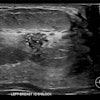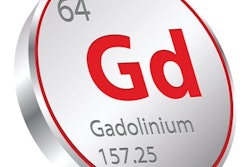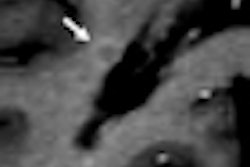
Japanese researchers have found a connection between gadolinium-based MRI contrast and abnormalities in two regions of the brain, which could represent a reaction to gadolinium's toxicity, according to a study published on 17 December in Radiology.
The findings from Teikyo University School of Medicine in Tokyo suggest the possibility that a toxic component of the contrast agent may remain in the body long after it is injected, even in patients with normal renal function.
High signal intensity is common in the dentate nucleus and globus pallidus regions of the brain on unenhanced T1-weighted MRI scans, noted lead author Dr. Tomonori Kanda, PhD, and colleagues. Previous research has shown that high signal intensity in the dentate nucleus is associated with a history of brain irradiation or multiple sclerosis, while high signal intensity of the globus pallidus has been linked to a number of conditions, including hepatic dysfunction, calcification, and neurofibromatosis.
Kanda and colleagues also noticed high signal intensity, or hyperintensity, in these two regions in patients who have had more than one administration of gadolinium-based contrast agents.
"In such patients, the signal intensity on T1-weighted images appears higher with increasing number of exposures to gadolinium-based contrast material," they wrote (Radiology, December 17, 2013).
To further explore this occurrence, the researchers compared 19 patients who had undergone six or more contrast-enhanced brain scans with 16 patients who had received six or more unenhanced scans.
Whole-brain MRI scans were conducted on 1.5-tesla systems (Signa HDxt or Signa Excite Twin Speed, GE Healthcare).
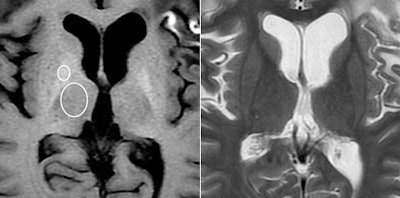 MRI of a 45-year-old woman with glioblastoma treated with surgery, chemotherapy, and radiation therapy. Unenhanced T1-weighted image (above, left) shows high-signal-intensity globus pallidus. Fast spin-echo T2-weighted image (above, right) at same level. Unenhanced T1-weighted image (below, left) shows high-signal-intensity dentate nucleus. Fast spin-echo T2-weighted image (below, right) at same level. Images courtesy of Radiology.
MRI of a 45-year-old woman with glioblastoma treated with surgery, chemotherapy, and radiation therapy. Unenhanced T1-weighted image (above, left) shows high-signal-intensity globus pallidus. Fast spin-echo T2-weighted image (above, right) at same level. Unenhanced T1-weighted image (below, left) shows high-signal-intensity dentate nucleus. Fast spin-echo T2-weighted image (below, right) at same level. Images courtesy of Radiology.
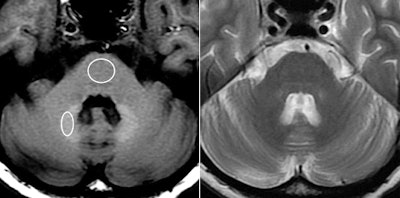
The analysis showed a significant correlation between the number of previous contrast administrations and signal intensity in the dentate nucleus and the globus pallidus, according to the researchers. Hyperintensity was significantly greater in patients who had received contrast, compared with those who received unenhanced scans.
Increased signal intensity in the dentate nucleus and globus pallidus on unenhanced MRI may be due to the number of previous gadolinium-based contrast administrations, Kanda and colleagues noted.
"Because gadolinium has a high signal intensity in the body, our data may suggest that the toxic gadolinium component remains in the body even in patients with normal renal function," Kanda said in a statement.
In addition, because patients with multiple sclerosis often receive numerous contrast-enhanced brain MRI scans, the hyperintensity of the dentate nucleus in these patients may have more to do with the large cumulative gadolinium dose than the disease itself.
Kanda emphasized there is currently no proof that gadolinium is responsible for hyperintensity on brain MRI, adding that additional research is needed to clarify the relationship.
